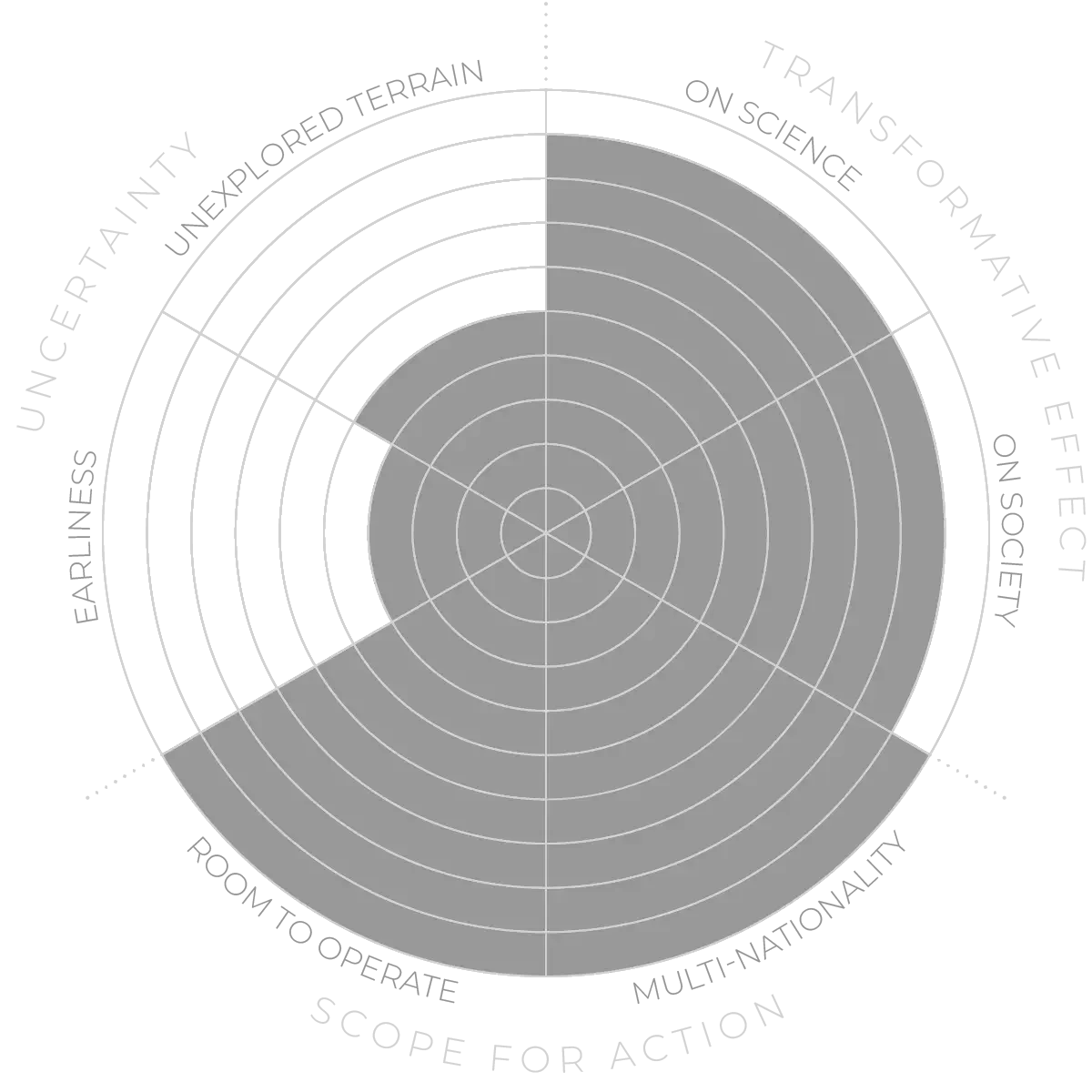Future Horizons:
10-yearhorizon
Improvements in culturing and real-world experiments are achieved
25-yearhorizon
A 21st-century fungal research infrastructure is established
The fungal family tree is completed using a combination of gene sequencing from partial environmental samples and pattern-matching using AI and machine learning.
One way to study commensal fungi is to separate fungal from host genes using “shotgun” metagenomics,5 a sequencing technique that allows researchers to study the genomes of entire microbial communities without needing to culture them first. This has already made it possible to advance the study of the human skin mycobiome6, the fungal component of the microbiota.
However, the interactions themselves also need to be studied, which requires an understanding of community ecology: how organisms interact within specific habitats. New insights are making it possible to study commensal strains in animals in vivo — in the gut mycobiome of lab mice,7 for example. Beyond standard lab-mouse work, novel model systems like hydra are also being developed to study fungal interactions within microbial communities.
Such approaches will be required to understand important changes we are making to commensal relationships: fungi, for example, play a crucial role in promoting carbon capture and in agriculture. This may be changing, however, as a consequence of synthetic phosphate use in soil.8 The synthetic phosphates change plants’ long-established symbiotic relationships with fungi, which may have knock-on effects for farming and for climate change.
Fungal ecology and evolution - Anticipation Scores
The Anticipation Potential of a research field is determined by the capacity for impactful action in the present, considering possible future transformative breakthroughs in a field over a 25-year outlook. A field with a high Anticipation Potential, therefore, combines the potential range of future transformative possibilities engendered by a research area with a wide field of opportunities for action in the present. We asked researchers in the field to anticipate:
- The uncertainty related to future science breakthroughs in the field
- The transformative effect anticipated breakthroughs may have on research and society
- The scope for action in the present in relation to anticipated breakthroughs.
This chart represents a summary of their responses to each of these elements, which when combined, provide the Anticipation Potential for the topic. See methodology for more information.



